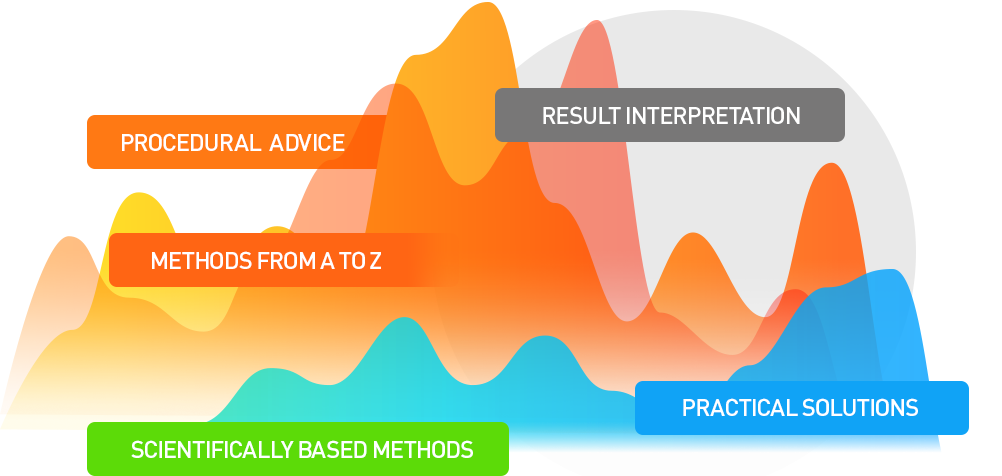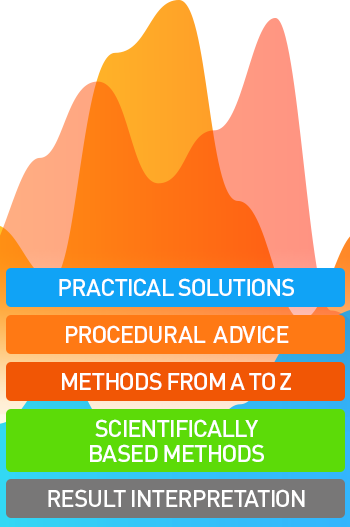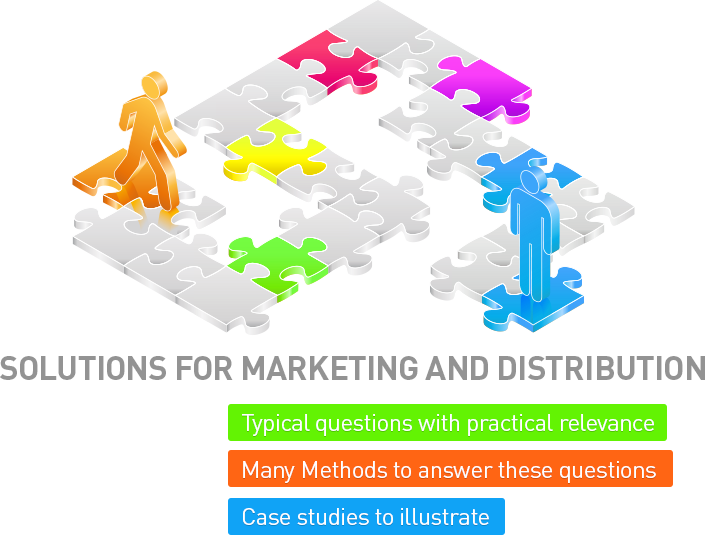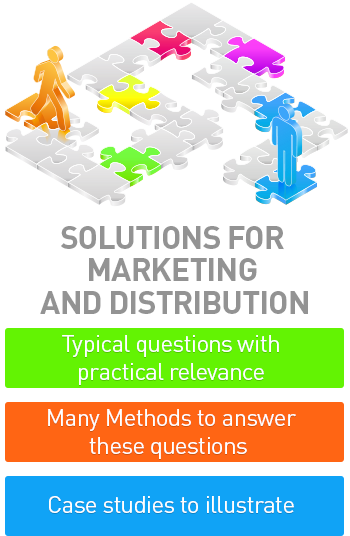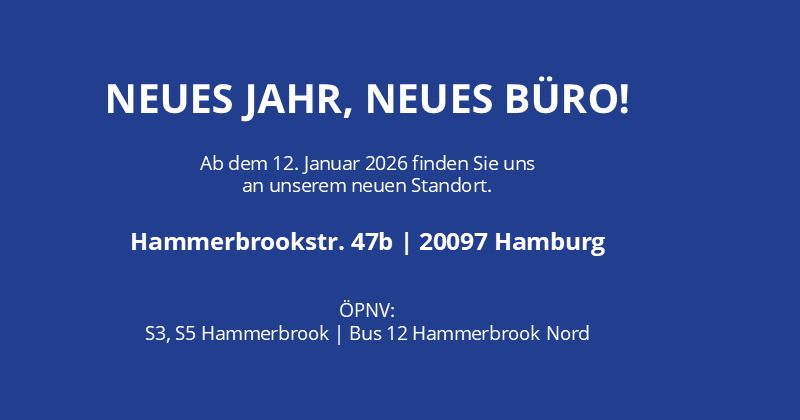Data Science
IfaD’s fundamental expertise is “applied data analysis”. Our institute’s name is also our commitment. Our speciality is connecting the latest scientific methods with the challenges of your day-to-day practice.
As our client, you profit from our broadly-based experience, our practical orientation, and the fact that – in the truest sense of the word – we work out solutions in collaboration with you.
We offer …
- Consulting on survey design
- Application of multivariate analysis methods
- Interpretation of results
For us, bringing Data Science to life involves fusing science and practice. In order to build bridges between these two worlds we also offer practice-oriented and customised workshops.
It is part of our understanding of our institute’s role to pass on our knowledge and methodological know-how to interested market researchers and students. We thus make extensive, well-founded and above all up-to-date information available free of charge on the internet – practically a compendium of the relevant methods for market researchers.
Solutions in practice
The evaluation and description of products, services, suppliers or potential customers are central elements in marketing practice. Together they form the basis for all market research tasks and the marketing decisions derived from these.
To achieve maximum efficiency in a market study, the features used must be relevant, understandable, differentiated and unambiguous.
The formulation of items on a theoretical basis is always the first stage of such a selection process. But the extent to which an item list defined in this way is “valid” can best be discovered with the aid of suitable multivariate procedures. Such procedures show which fundamental rating dimensions exist, and whether the constructed items satisfactorily cover these. In this way, weaknesses in the formulations can be corrected, gaps filled and redundancies eliminated.
Furthermore, the use of fundamental dimensions makes possible to present the results in a simplified and easy-to-understand way. Relevant procedures are …
A manufacturer’s product performs excellently in many respects – even better than its competitors. Despite this, its market share falls. Resources are often wasted because of a failure to identify the cause of this development. Products are often optimized on criteria that are relatively unimportant to the consumer.
The really important factors in the design of a company’s products or services can rarely be measured directly – e.g. by asking “How important to you is…?” Such queries only touch the cognitive level of decision-making, and can lead to serious misinterpretations and thus to costly errors in marketing decisions. The aspects that really govern the decision can be measured by means of procedures that take account of the underlying relationships. These include:
What is the optimal price for a product? In today’s environment of globalization and market individualization, this question is becoming harder and harder to answer. Although it was once enough to simply add on an appropriate margin on top of production, sales and distribution costs to determine an effective market price, nowadays this approach is largely impractical. A strict orientation on the competition also fails to yield good results.
Yet price is a very important factor in almost all buying decisions. Concretely, price optimization may be required for determining the price of a new product, for price modifications in the event of product alterations (re-launches), or finding new price levels in order to achieve specific objectives such as e.g. boosting sales or optimizing profitability.
Alongside conjoint measurement, which allows for the analysis of an optimal price against a backdrop of product attributes and competitors, there are also methods whose focus is directed specifically towards price determination. These include:
What are the expectations of my (potential) customers?
How can my employees be characterized?
Answers to such questions are important when decisions about strategies and activities in respect of technical feasibility and personnel issues need to be taken in the light of factors such as costs and capacities – in the fields of both marketing and human resources.
But they can rarely be answered in a global way, because very few people correspond to the “average”. Most people deviate more or less strongly from the overall norm. In consequence, in most cases it is not efficient to look simply at the average consumer or average employee. Nobody would feel that the message was really aimed at them.
Segmentation procedures make it possible to generate a multiplicity of sharp individual pictures from a diffuse overall picture. In most cases, the group as a whole can be broken down into 3 to 6 subgroups. All members of the total sample can be described relatively accurately by reference to this small number of subgroup profiles. Often, such profiles have a high recognition value for the expert observer. This underlines the practical relevance of such results.
The following situations frequently arise in market research practice:
- A consumer survey generates a vast number of ratings of the company’s own brand and those of the competitors;
- The results of an employee satisfaction survey can be broken down by department.
The presentation of such results in tabular form is often awkward, because it is difficult to recognize structures contained within such masses of numbers.
This complicates the central marketing task, which is to understand and strengthen the positioning of the company’s own offerings, and differentiate them from the competition, in a targeted and planned fashion. Only those companies or products with a clear and outstanding positioning in the market are well placed to compete.
Mapping procedures help in gaining a quick and clear overview – as in the motto “a picture is worth a thousand words” (or in this case “numbers”). They make it easy to recognize which products are similar, which products fill niches, and what their weaknesses are in comparison to the competition. Relevant procedures are …
Customers and employees are a company’s most important assets. Keeping customers satisfied is often difficult, but it is generally much easier than winning new customers. Satisfied employees perform better than dissatisfied ones, and they are more loyal to the company – and thus more willing to go the extra mile in difficult situations. They transport a positive image of the company to the outside world.
These relationships are generally recognized. But measuring the key dimensions in a valid way and changing them in a positive and efficient manner requires special know-how and methods.
Customer and employee loyalty are complex latent variables, which can be quantified with the aid of various indicators. Often, the connections between loyalty and its influencing variables at different levels are equally complex. Loyalty again may have an impact on various aspects of behavior, such as the tendency to remain a customer of a company, to intensify the relationship, or to recommend the company to others – or the tendency to continue to work for a company over a long period and to support it with a high level of commitment.
Complex causal analysis procedures make it possible to quantify the direct and indirect influences in such interrelationships and to use these learnings in the context of CSM (Customer Satisfaction Management) and ESM (Employee Satisfaction Management) systems.
WORKSHOPS
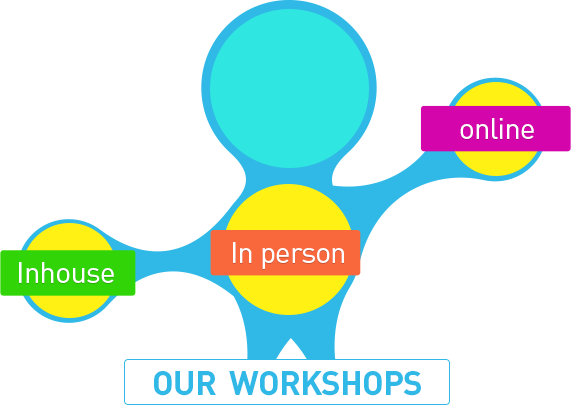
Review of offers
We offer you individual, practice-oriented workshops on data science:
- online, at your company’s own premises or at our premises in Hamburg
- half-day, full-day, one- or two-day
- one or two speakers
- from three participants
- from € 700 per workshop
Time and contents are tailored to your needs. All workshops have the character of an intensive seminar with high practical relevance. All workshops are conducted in German.
Workshop-Contents
The contents of our workshop are tailored to your individual needs. Together, we put together the workshop modules relevant for your market research.
Individual workshop modulesfor example for your Conjoint workshop:
- Conjoint Basics and Conjoint Definitions
- Conjoint basic variants
- Conjoint Evaluation and Conjoint market simulations
- Conjoint Matrix and Conjoint Design
- Conjoint PLUS
Individual workshop modules, for example for your MaxDiff workshop:
- MaxDiff Basics
- MaxDiff PLUS
Wide range of topics for further data science workshop modules:
- further pricing topics
- Driver Analysis and Structural Equation Models
- Penalty and Reward Analysis (PRA)
- TURF Analysis (G/TURF)
Practical benefits of all IfaD workshops
Whether it is held online, at your premises or at ours:
- Gain assurance in selection of the right methods
- Strengthen your consulting skills for the benefit of your clients
- Extend your own capabilities by learning new methods
- Obtain an intuitive feel for key analysis procedures
Benefits of Online and in-house workshops
The online meeting as well as our visit is your advantage
- Flexibility in scheduling
- No travel costs for your company
- Integrated into daily routine
- Confidential discussion of topics
- Team spirit through teamwork
Our speakers
Anneke Schwier:
Graduate Economist, Head of Data Science, responsible for methodological consulting, application of analysis methods and training.
Focus: Preference Analysis
Prof. Dr. Heiko Schimmelpfennig:
Degree in business, Project Manager for Data Science at IfaD, responsible for methodological consulting, application of analytical methods and training.
Professorship at the BSP Business & Law School Hamburg.


